A Novel Bulk Acoustic Wave Resonator for Filters and Sensors Applications
Abstract
:1. Introduction
2. Experimental Section
2.1. Device Architecture and Computational Modeling

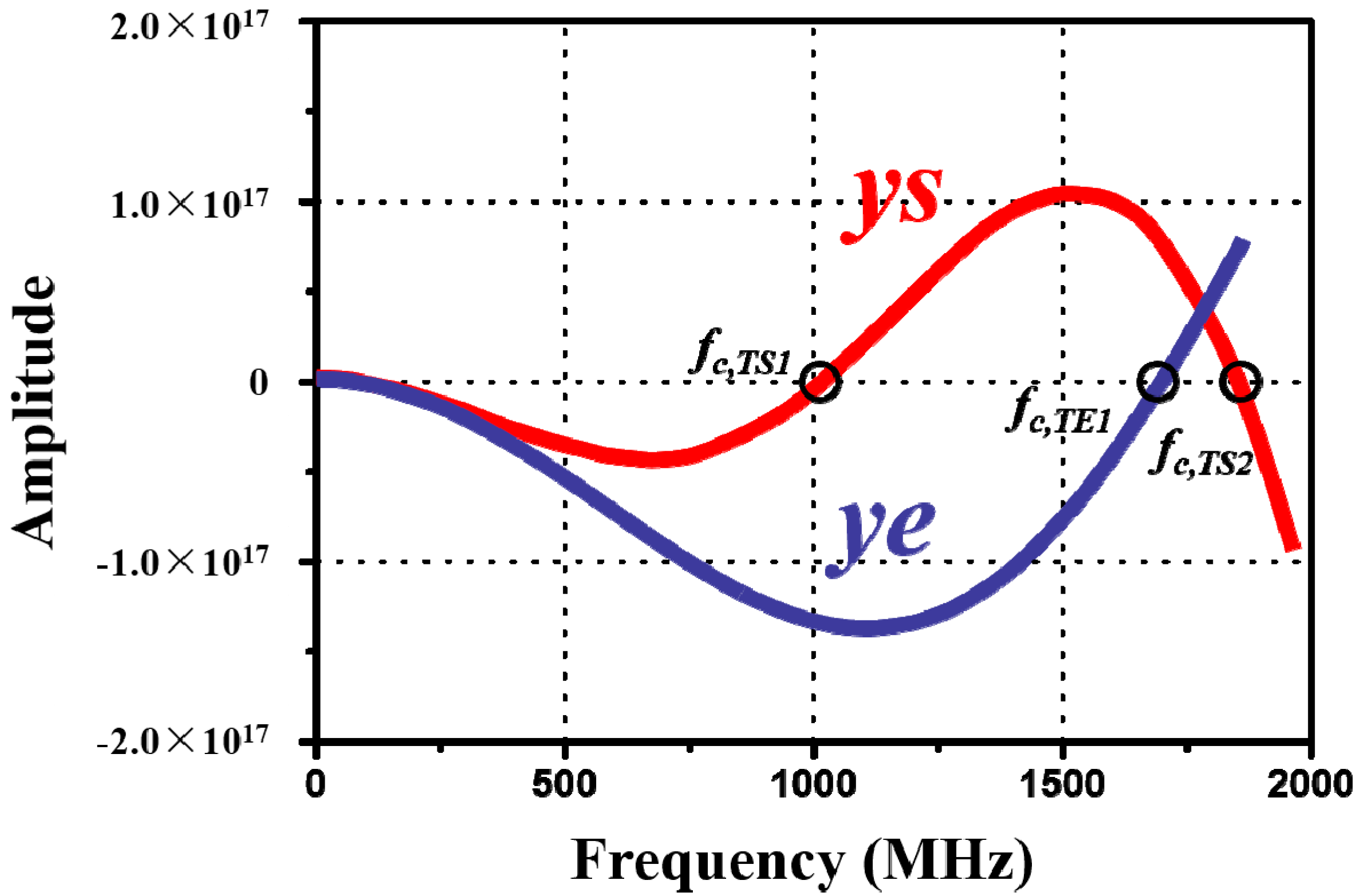

2.2. Simulations and Fabrications
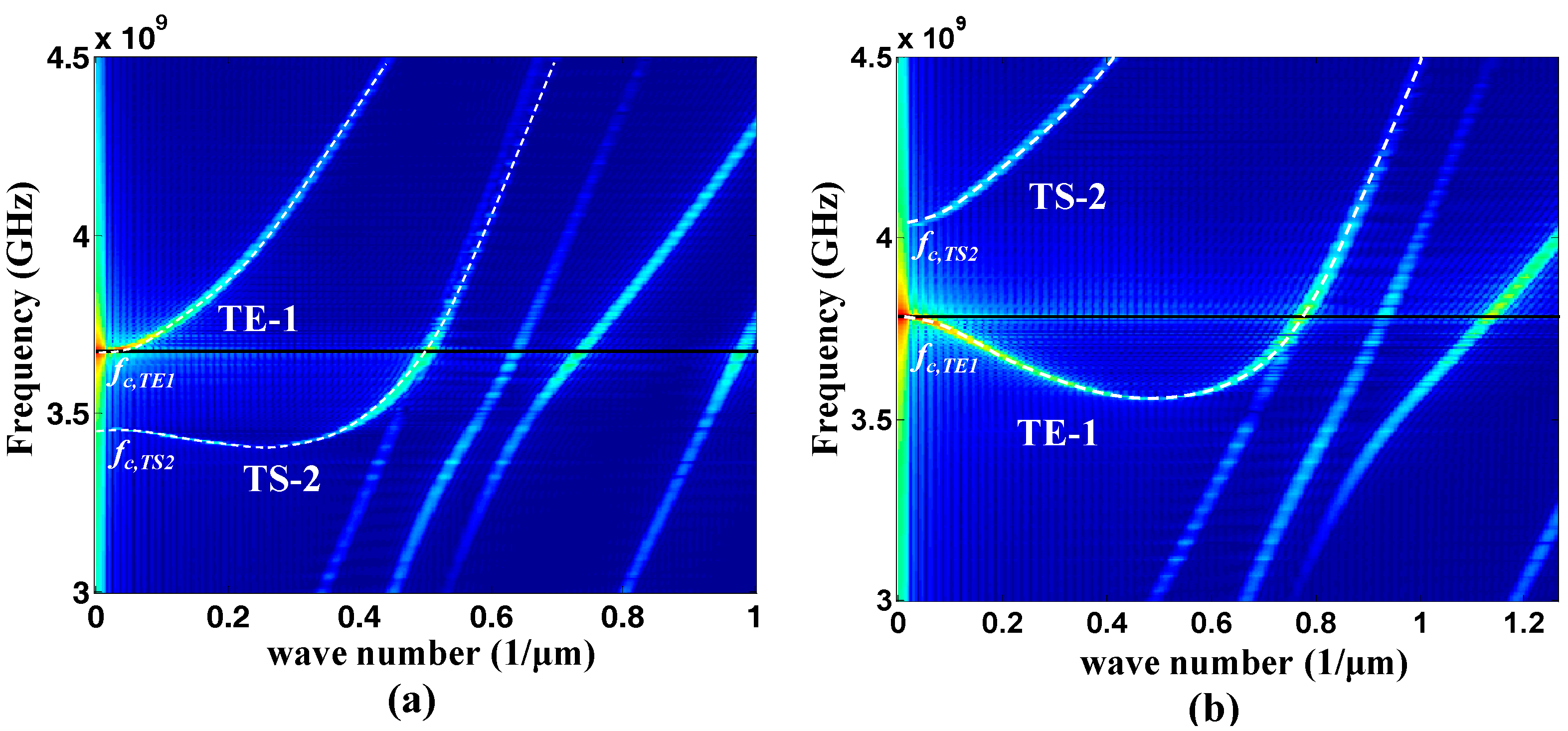
3. Results and Discussion
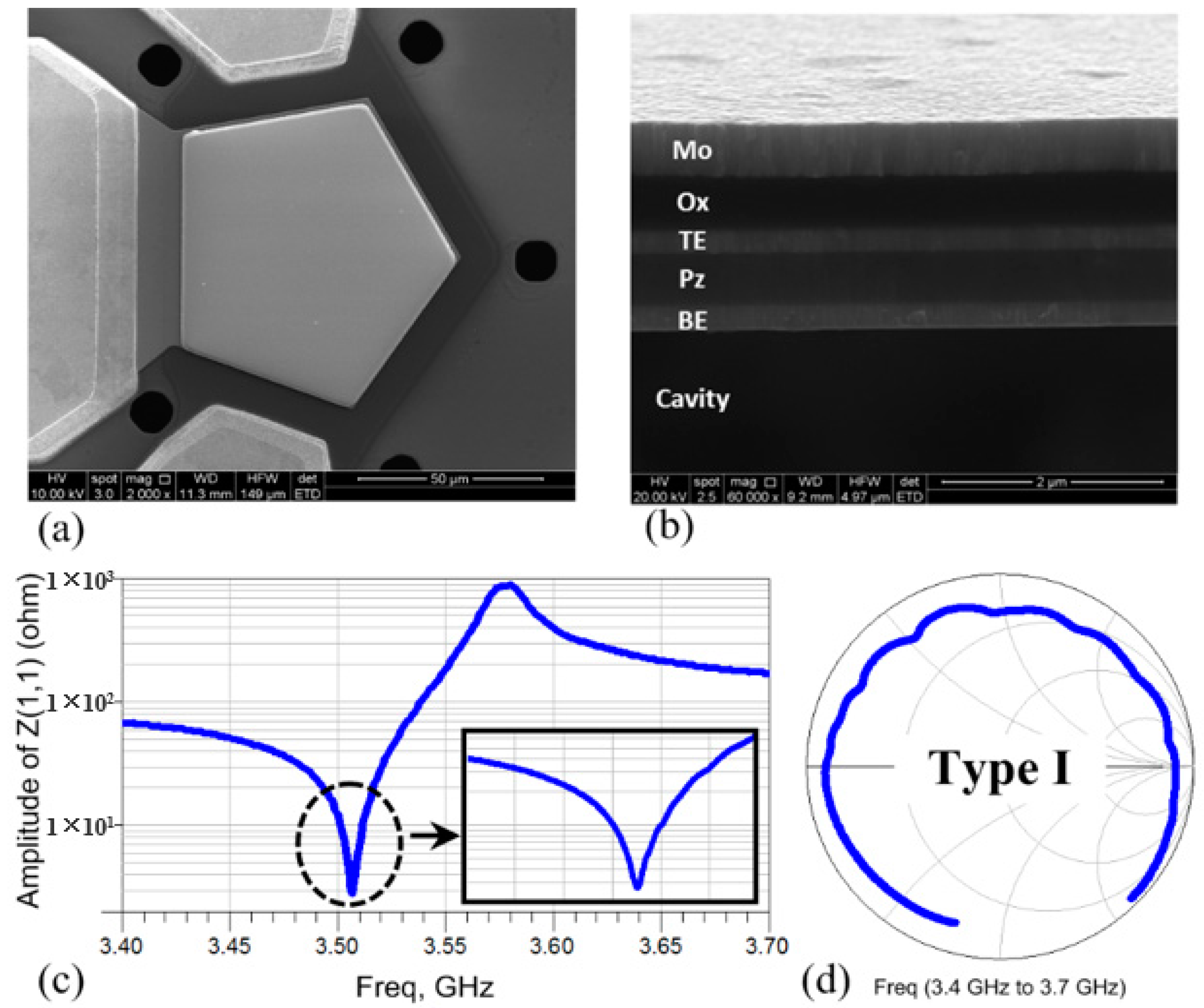
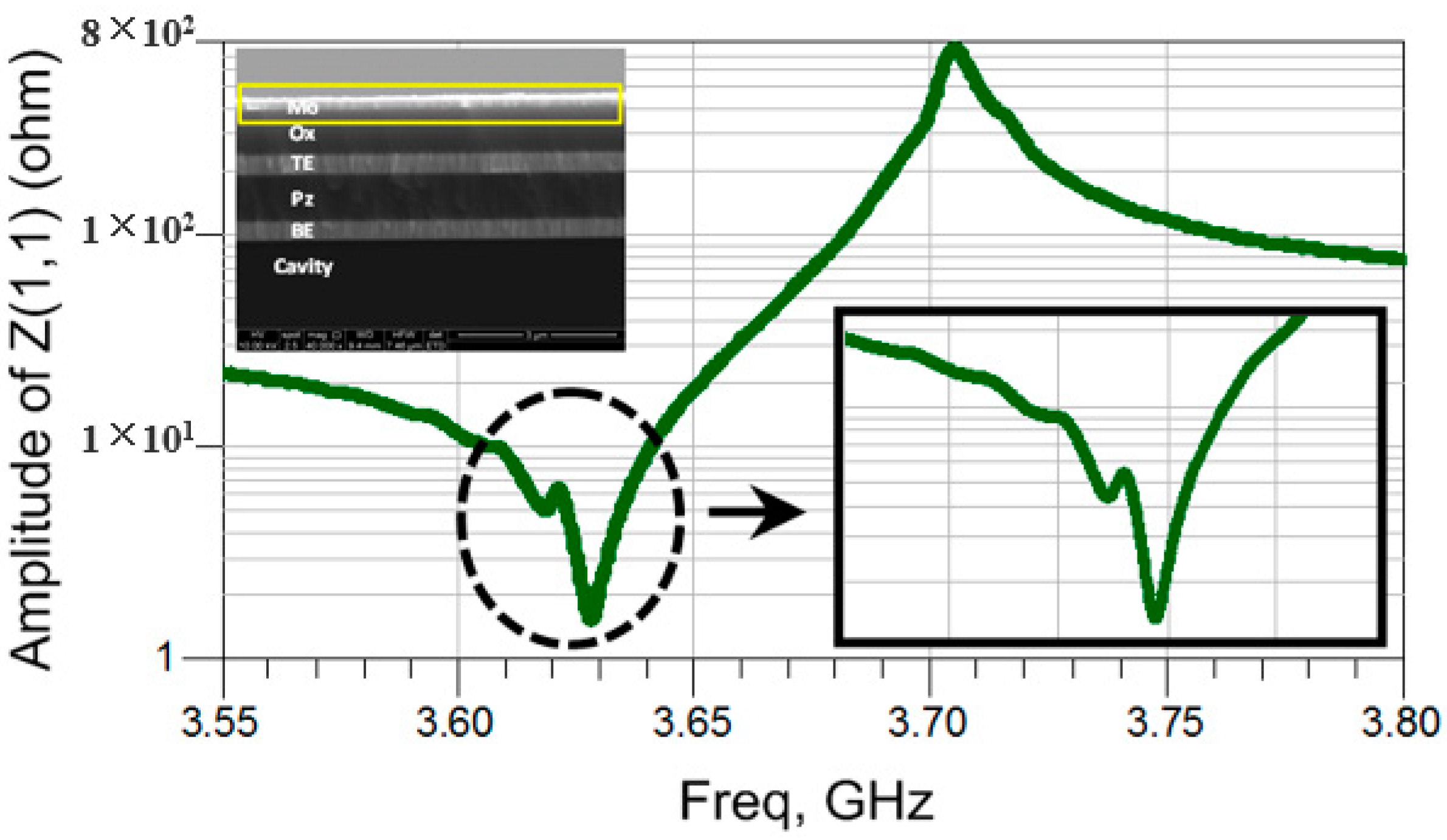
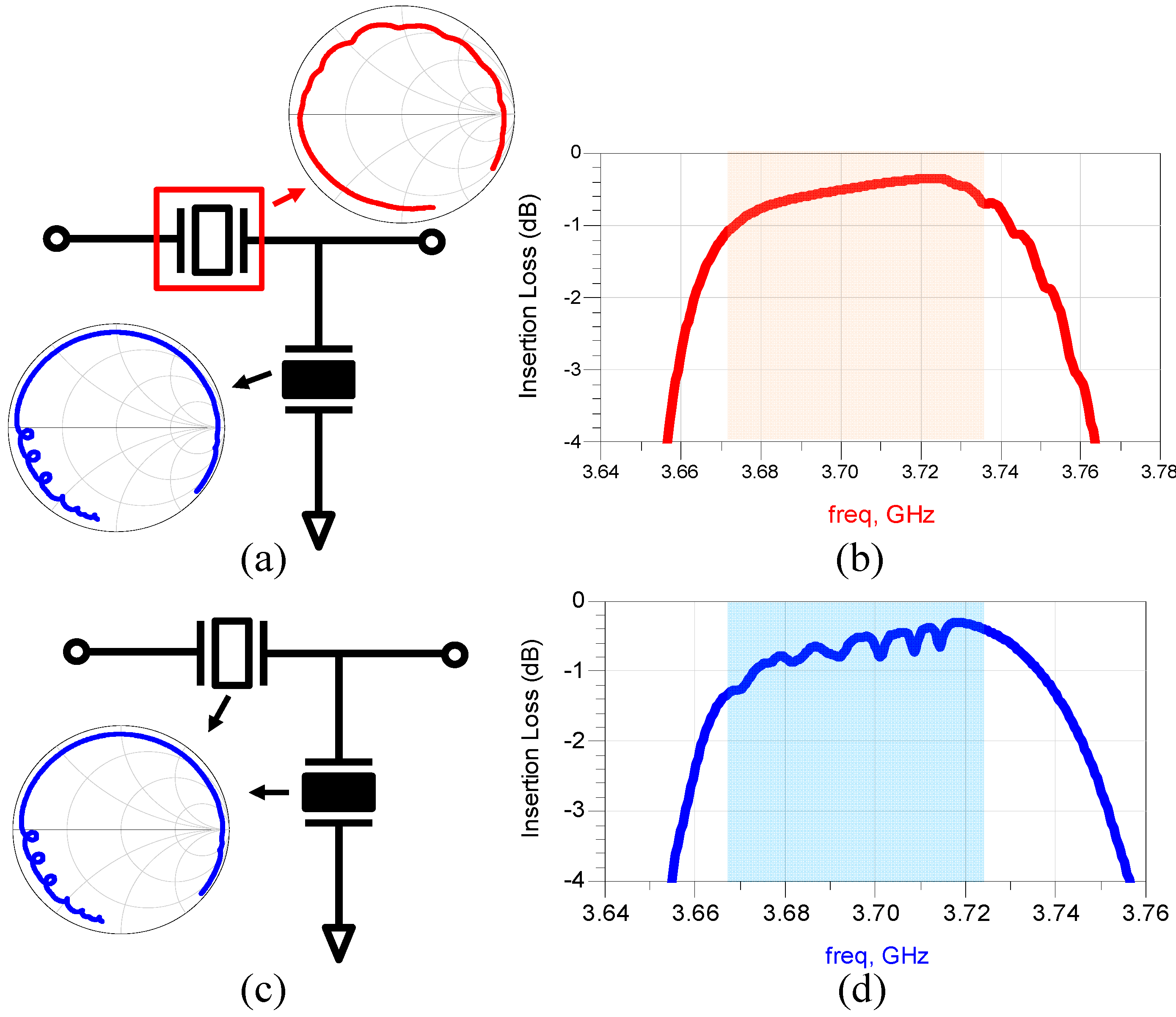
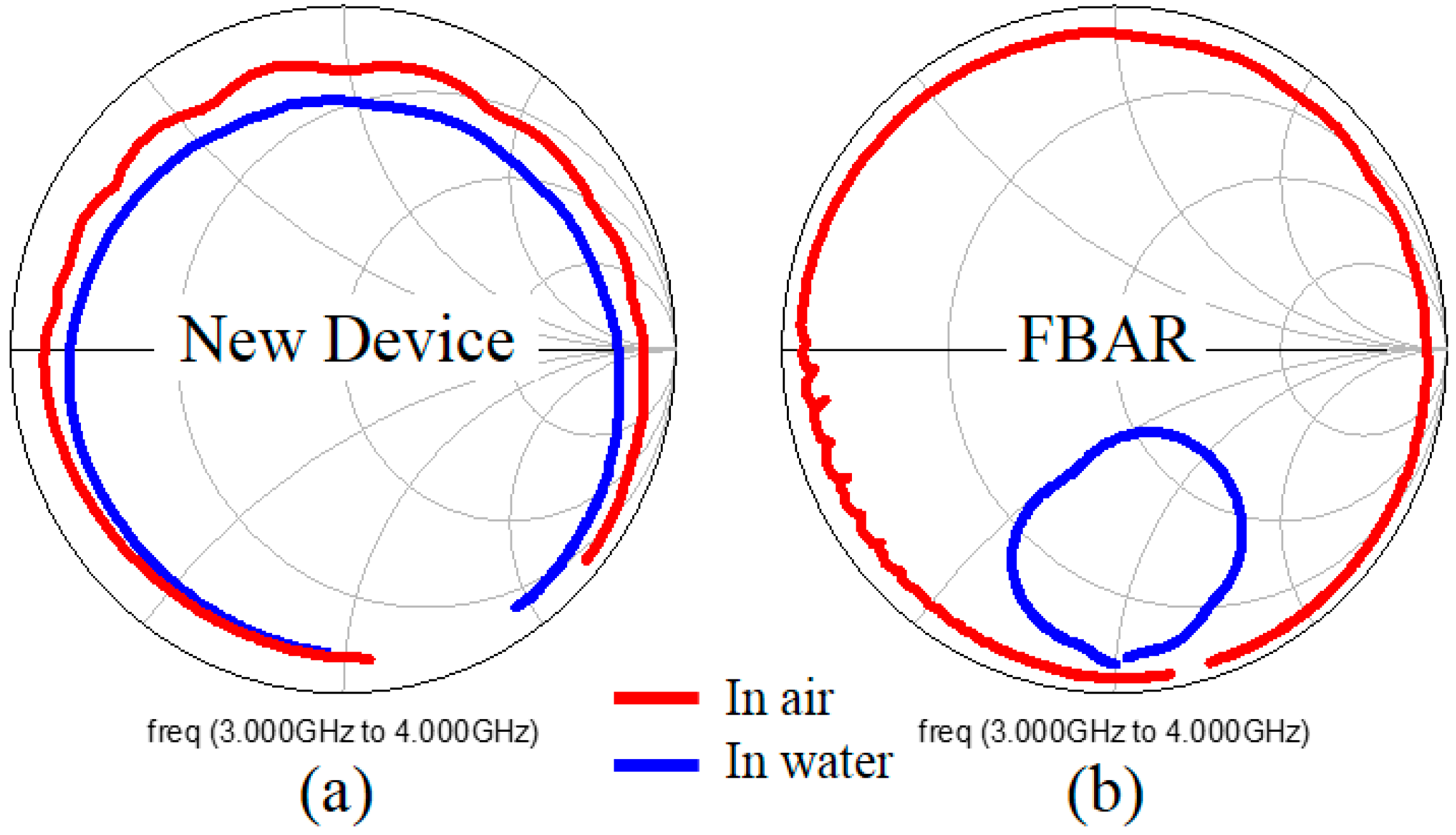
4. Conclusions
Supplementary Materials
Acknowledgments
Author Contributions
Conflicts of Interest
References
- Ruby, R.; Bradley, P.; Larson, J.; Oshmyansky, Y. PCS 1900 MHZ duplexer using thin film bulk acoustic resonators (FBARs). Electron. Lett. 1999, 35, 794–795. [Google Scholar] [CrossRef]
- Ylilammi, M.; Ella, J.; Partanen, M.; Kaitila, J. Thin film bulk acoustic wave filter. IEEE Trans. Ultrason. Ferroelectr. Freq. Control 2002, 49, 535–539. [Google Scholar] [CrossRef] [PubMed]
- Qiu, X.; Tang, R.; Zhu, J.; Oiler, J.; Yu, C.; Wang, Z.; Yu, H. The effects of temperature, relative humidity and reducing gases on the ultraviolet response of ZnO based film bulk acoustic-wave resonator. Sens. Actuators B Chem. 2011, 151, 360–364. [Google Scholar] [CrossRef]
- Pang, W.; Zhao, H.; Kim, E.S.; Zhang, H.; Yu, H.; Hu, X. Piezoelectric microelectromechanical resonant sensors for chemical and biological detection. Lab Chip 2012, 12, 29–44. [Google Scholar] [CrossRef] [PubMed]
- García-Gancedo, L.; Zhu, Z.; Iborra, E.; Clement, M.; Olivares, J.; Flewitt, A.; Milne, W.; Ashley, G.; Luo, J.; Zhao, X. Aln-based baw resonators with CNT electrodes for gravimetric biosensing. Sens. Actuators B Chem. 2011, 160, 1386–1393. [Google Scholar] [CrossRef]
- Zhao, X.; Pan, F.; Ashley, G.M.; Garcia-Gancedo, L.; Luo, J.; Flewitt, A.J.; Milne, W.I.; Lu, J.R. Label-free detection of human prostate-specific antigen (HPSA) using film bulk acoustic resonators (FBARs). Sens. Actuators B Chem. 2014, 190, 946–953. [Google Scholar] [CrossRef]
- O’Connell, A.D.; Hofheinz, M.; Ansmann, M.; Bialczak, R.C.; Lenander, M.; Lucero, E.; Neeley, M.; Sank, D.; Wang, H.; Weides, M.; et al. Quantum ground state and single-phonon control of a mechanical resonator. Nature 2010, 464, 697–703. [Google Scholar] [CrossRef] [PubMed]
- Hashimoto, K.-Y. RF Bulk Acoustic Wave Filters for Communications; Artech House: Boston, MA, USA, 2009. [Google Scholar]
- Jose, S.; Hueting, R.; Jansman, A. On the rule of thumb for flipping the dispersion relation in baw devices. In Proceedings of the 2011 IEEE International Ultrasonics Symposium (IUS), Orlando, FL, USA, 18–21 October 2011; pp. 1712–1715.
- Zhou, C.; Zhang, D.; Pang, W.; Zhang, H. Spurious free and temperature stable Giga-hertz acoustic wave resonators with enhanced quality factor. In Proceedings of the Asia-Pacific Microwave Conference (APMC 2012), Kaohsiung, Taiwan, 4–7 December 2012; pp. 1286–1288.
- Fattinger, G.; Marksteiner, S.; Kaitila, J.; Aigner, R. Optimization of acoustic dispersion for high performance thin film baw resonators. In Proceedings of the 2005 IEEE Ultrasonics Symposium, Rotterdam, The Netherlands, 18–21 September 2005; pp. 1175–1178.
- Zhang, H.; Marma, M.S.; Kim, E.S.; McKenna, C.E.; Thompson, M.E. Implantable resonant mass sensor for liquid biochemical sensing. In Proceedings of the IEEE International Conference on Micro Electro Mechanical Systems, Maastricht, The Netherlands, 25–29 January 2004; pp. 347–350.
- Zhang, H.; Kim, E.S. Micromachined acoustic resonant mass sensor. J. Microelectromech. Syst. 2005, 14, 699–706. [Google Scholar] [CrossRef]
- Lowe, M.J. Matrix techniques for modeling ultrasonic waves in multilayered media. IEEE Trans. Ultrason. Ferroelectr. Freq. Control 1995, 42, 525–542. [Google Scholar] [CrossRef]
- Fattinger, G.G.; Tikka, P.T. Laser measurements and simulations of fbar dispersion relation. In Proceedings of the 2001 IEEE MTT-S International Microwave Symposium Digest, Phoenix, AZ, USA, 20–24 May 2001; pp. 371–374.
- Ruby, R. Review and comparison of bulk acoustic wave fbar, SMR technology. In Proceedings of the 2007 IEEE Ultrasonics Symposium, Vancouver, BC, Canada, 28–31 October 2007; pp. 1029–1040.
- Campanella, H.; Esteve, J.; Montserrat, J.; Uranga, A.; Abadal, G.; Barniol, N.; Romano-Rodriguez, A. Localized and distributed mass detectors with high sensitivity based on thin-film bulk acoustic resonators. Appl. Phys. Lett. 2006, 89, 033507. [Google Scholar] [CrossRef]
© 2015 by the authors; licensee MDPI, Basel, Switzerland. This article is an open access article distributed under the terms and conditions of the Creative Commons Attribution license (http://creativecommons.org/licenses/by/4.0/).
Share and Cite
Zhang, Z.; Liang, J.; Zhang, D.; Pang, W.; Zhang, H. A Novel Bulk Acoustic Wave Resonator for Filters and Sensors Applications. Micromachines 2015, 6, 1306-1316. https://doi.org/10.3390/mi6091306
Zhang Z, Liang J, Zhang D, Pang W, Zhang H. A Novel Bulk Acoustic Wave Resonator for Filters and Sensors Applications. Micromachines. 2015; 6(9):1306-1316. https://doi.org/10.3390/mi6091306
Chicago/Turabian StyleZhang, Zhixin, Ji Liang, Daihua Zhang, Wei Pang, and Hao Zhang. 2015. "A Novel Bulk Acoustic Wave Resonator for Filters and Sensors Applications" Micromachines 6, no. 9: 1306-1316. https://doi.org/10.3390/mi6091306
APA StyleZhang, Z., Liang, J., Zhang, D., Pang, W., & Zhang, H. (2015). A Novel Bulk Acoustic Wave Resonator for Filters and Sensors Applications. Micromachines, 6(9), 1306-1316. https://doi.org/10.3390/mi6091306




